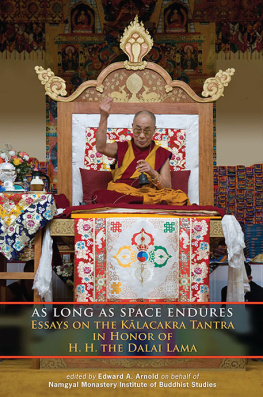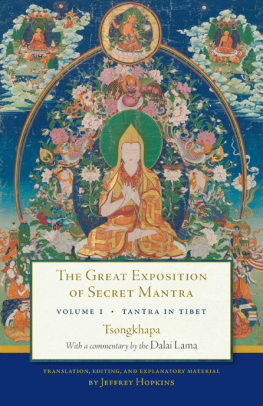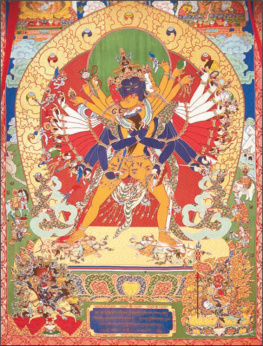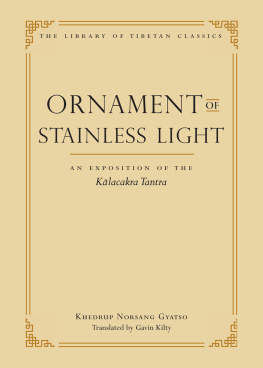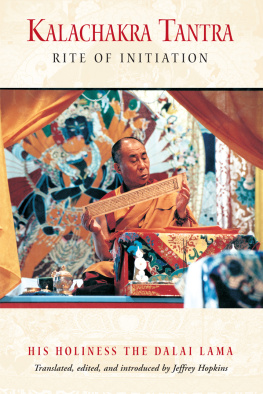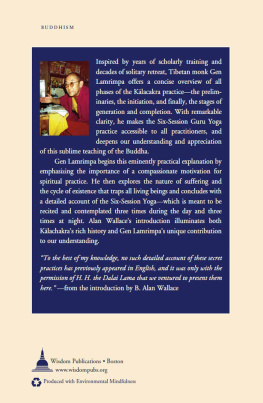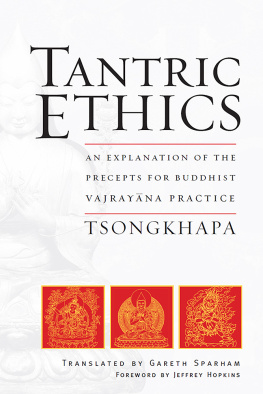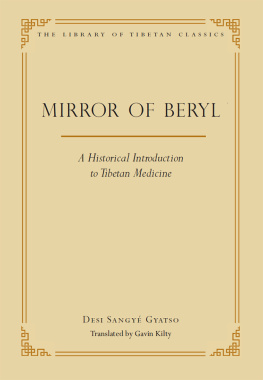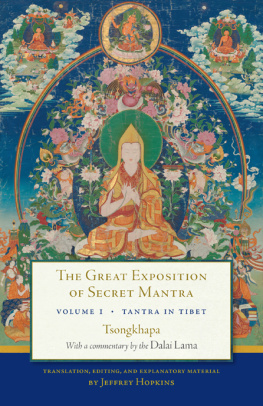Sign up to receive news and special offers from Shambhala Publications.

Or visit us online to sign up at shambhala.com/eshambhala.
As Long as Space Endures
Essays on the Klacakra Tantra
in Honor of H.H. the Dalai Lama
Edward A. Arnold
Editor
on behalf of
Namgyal Monastery Institute
of Buddhist Studies

Snow Lion
Boulder
Snow Lion
An imprint of Shambhala Publications, Inc.
4720 Walnut Street
Boulder, Colorado 80301
www.shambhala.com
Copyright 2009 Edward A. Arnold and Namgyal Monastery
All rights reserved. No portion of this book may be reproduced by any means without prior written permission from the publisher.
Library of Congress Cataloging-in-Publication Data
As long as space endures : essays on the Klacakra tantra in honor of H.H. the Dalai Lama / Edward A. Arnold, editor on behalf of Namgyal Monastery Institute of Buddhist Studies.
p. cm.
Includes bibliographical references.
eISBN 9781559399104
ISBN 9781559393034 (cloth edition : alk. paper)
ISBN 9781559393300 (trade paper edition : alk. paper)
1. Klacakra (Tantric rite) 2. Tripiaka. Strapiaka. Tantra. KlacakratantraCriticism, interpretation, etc. 3. YogaTantric Buddhism. 4. Tantric BuddhismChinaTibet. I. Arnold, Edward A., 1969-II. Bstan-dzin-rgya-mtsho, Dalai Lama XIV, 1935
BQ8921.K34A8 2009
294.3925dc22 2008042626
May the wishes of he who has a heart of gems,
Who benefits all with great waves of perfected karma,
Carrying on his courageous shoulders
The burden of the work of countless buddhas,
Be spontaneously fulfilled just so.
And by that power may the heavenly door
Of the auspicious aeons fulfillment phase
Open onto a springtime revival for beings;
And may there spread to the peaks of the world
Auspicious signs of the enlightenment lore
Flourishing in all times and place.
O Holder of the White Lotus,
May a nectar stream of your transforming powers
Ever mature the might of my heart.
And by my delighting you with the offering
Of living in accordance with the spiritual teachings,
May the seas of bodhisattva deeds reach their goal.
By the power of the blessings of the buddhas and bodhisattvas,
The power of unfailing cause and effect,
And the power of my pure aspirations,
May each and every aim of this prayer
Be easily and quickly fulfilled.
from Song Producing Immortality,
the traditional long-life prayer for His Holiness the Dalai Lama, written by Ling Rinpoche and Trijang Rinpoche, translated by Glenn Mullin
It is on behalf of the future of Du Khor Choe Ling, the Land of Klacakra Study and Practice, the new temple complex of Namgyal Monastery Institute of Buddhist Studiesthat it may offer refuge for practitioners and prosper under the ongoing care of His Holiness the Dalai Lamathat this volume is offered to the Great Fourteenth on October 9, 2007, in Ithaca, New York.
Reverence to our Guru, (His Holiness the Dalai Lama),
indivisible from Holy Manjughosha
and Primal Buddha Kalachakra,
Please now grant all common and supreme powers!
Reverence to the Primal Buddha, Kalachakra,
Whose Body transcends the subatomic realm,
shining translucent through every aspect,
Whose Speech touches the hearts of all beings
with inexpressible, invincible booming voice,
Whose Mind is the vajra of the great bliss
of the creativity of the undissipated drop,
encompassing all things while sporting
with the aspectless Lover Voidness!
Khedrub Jey (13851438), mKhas Grub Zhal Lung (Kalachakra Sadhana, Salutations)
I first beheld the color-particle mandala of Kalachakra at 23 in April 1965, during the annual Citra month performance of the Kalachakra practices in the Namgyal Monastery in Dharamsala, Punjab (at that time), India. As I walked around with the jostling crowd and marveled at the glistening vivid colors of the intricate powder-rendered patterns of the measureless mansion and its environs and seed-syllable-represented deities, my own voice, seeming to come from nowhere conscious, startled me by exclaiming in my head in English (that time I was mostly thinking in Tibetan); If human beings can create something as exquisitely beautiful as that, then surely buddhahood is possible! Though I might not have expressed it as such then, it was like seeing the genetic template of perfect enlightenment, body, speech, and mind. It awoke me from the subliminal cosmological despair shared with all modernized people, imprisoned within the indoctrinated idea that life is meaningless, evolution is purposeless, so be resigned to such moments of relief as you can get in whatever way, wherever, whenever. It gave me the hope that my deeper, almost innate determination that true happiness must be possible, this world does have a happy ending, beyond anything we are allowed to imagine, was in fact realistic. A dream, yes, considering our normal waking state, but a dream that could be realized in life.
The vision of enlightenment elaborated by the Buddha (Shakyamuni Buddha himself, according to Indo-Tibetan traditional scholars; some mystic celestial Shakyamuni Buddha encountered by visionaries in Kashmir fifteen hundred years later, according to modern historicist scholars) as the Wheel of Time buddha emanation and buddha world is among the most extraordinary of human artifacts. Time is usually represented in spiritual traditions, including most forms of Buddhism, as dreadful, destructive, deadly. It is relentless impermanence and cruel death. Krishna in the Bhagavadgita, reveals himself to the terrified Arjuna as Great Time (Mahakala), described as a monster destroyer with countless faces and gaping mouths devouring great streams of beings and worlds that flow into him. Shakespeare has Ulysses say to Achilles, with typically unforgettable profundity, Time hath my Lord, a wallet at its back, wherein it puts alms for eternity! (Troilus and Cressida). So what is a Buddha doing, creating himself as a Wheel (read Machine) of Time. How can what is supposed to be wisdom and compassion perfected, the consummation of all that living beings strive for, display itself as a machine of time?
My suggestion is that the buddha-art of the Wheel of Time is the Buddhas solution of the insoluble dilemma of the bodhisattva, the resolution of the double bind she or he catches herself or himself in by undertaking the bodhisattva vow. In this vow, the bodhisattva vows to pursue perfect enlightenment for the sake of all beings, not seeking personal liberation from suffering alone, but only accepting the bliss of release when all beings also receive it. A noble determination, to be sure. His Holiness the Dalai Lama, our precious Guru, mentioning his name here only for a specific purpose, often repeats the verse of Shantideva, that he will stay in the world to help beings as long as space endures, and beings need his or her help.
Yet there have been innumerable buddhas in the past, buddhas free of suffering themselves, active in helping beings, at least some beings. Yet here we are still suffering and suffering. Did they break their vows as bodhisattvas? Did they abandon us to our miserable fates? It would certainly seem so, on the face of it. We cannot deny it.
But wait, we are ignorant, but buddhas are not. Do they know something we do not? Our ignorance causes our suffering. Their wisdom gives them their freedom. As long as space endures! As long as time continues! Hmmm! Could it be that buddhas go beyond space and time? Does their wisdom see through the intrinsic reality of space and time, realize their voidness of objective existence, thus releasing their universal compassion to reach out through all space and all time?
Next page
